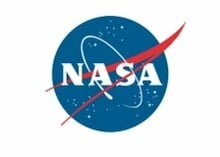Staff Writer

NASA has selected a team led by Ball Aerospace & Technologies Corporation for a demonstration of a high performance "green" alternative to the highly toxic fuel hydrazine.
Following a solicitation and peer-review selection process, NASA chose the Green Propellant Infusion Mission proposal, with a team led by Ball and co-investigators from the Aerojet Corporation in Redmond, Wash., the US Air Force Research Laboratory at the Wright Patterson Air Force Base in Ohio, the US Air Force Space and Missile Systems Center at the Kirkland Air Force Base in New Mexico, NASA's Glenn Research Center in Cleveland and NASA's Kennedy Space Center in Florida.
Today's use of hydrazine fuel for rockets, satellites and spacecraft is pervasive. Hydrazine is an efficient propellant and can be stored for long periods, but it also is highly corrosive and toxic, NASA says. The aeronautics agency is seeking non-toxic, high performance green propellants that could be safely and widely used by rocketeers, ranging from government to industry and academia.
Green propellants include liquid and solid, mono-propellant (which use one fuel source) and bi-propellants (which use two) and hybrids that offer safer handling conditions and lower environmental impact than current fuels, NASA says. NASA calls maturing a space technology, such as a new green propellant, to mission readiness through relevant environment testing and demonstration "a significant challenge from a cost, schedule and risk perspective. "
The program is expected to be developed and the propellant used in flight in about three years. The Space Technology Program will provide $45 million for the mission, with some additional cost-sharing by mission co-investigators.
 NASA has selected a team led by Ball Aerospace & Technologies Corporation for a demonstration of a high performance "green" alternative to the highly toxic fuel hydrazine.
NASA has selected a team led by Ball Aerospace & Technologies Corporation for a demonstration of a high performance "green" alternative to the highly toxic fuel hydrazine.